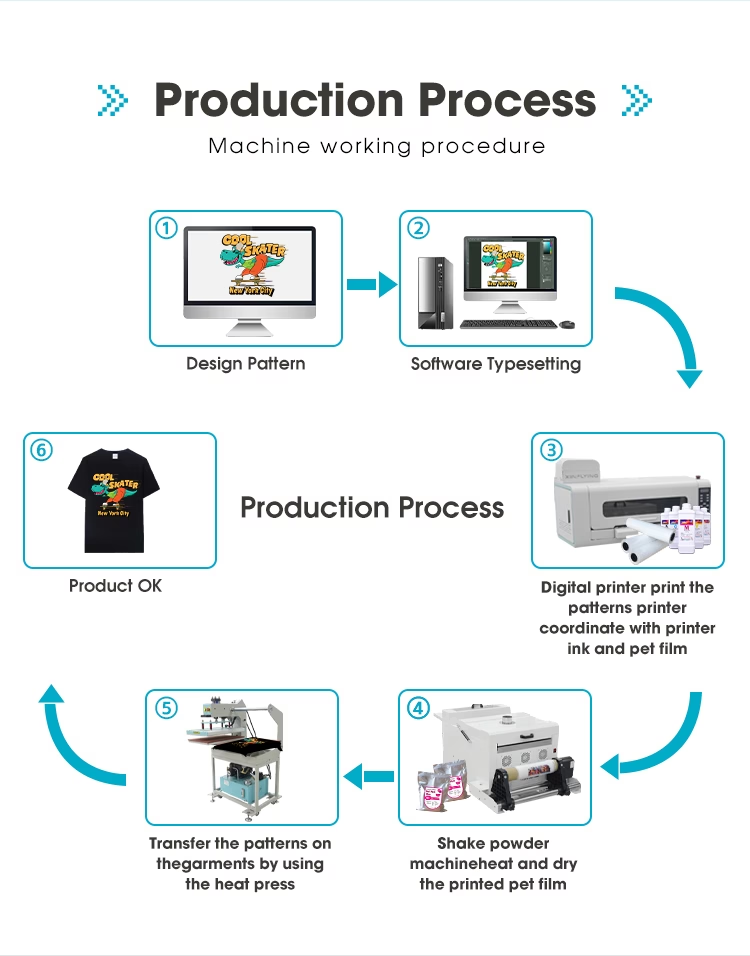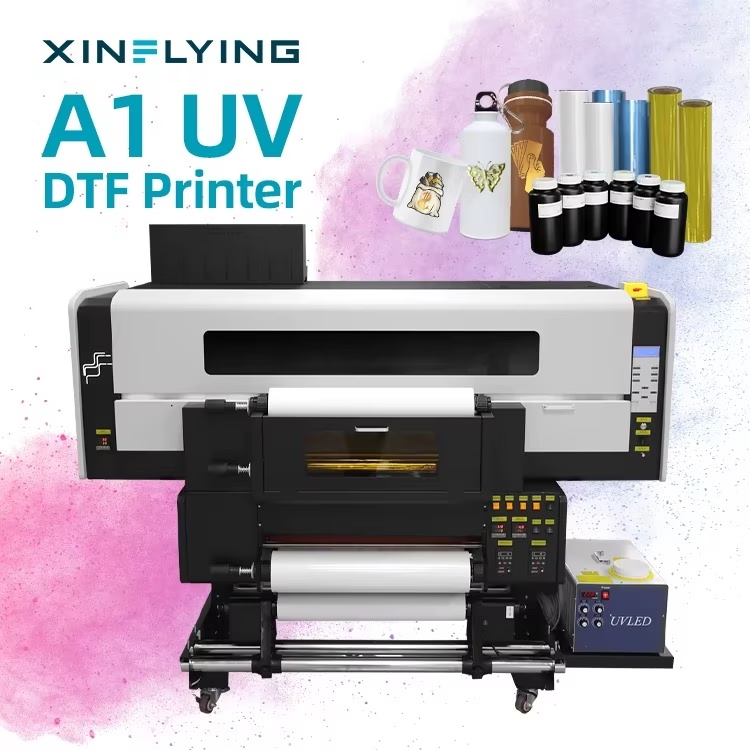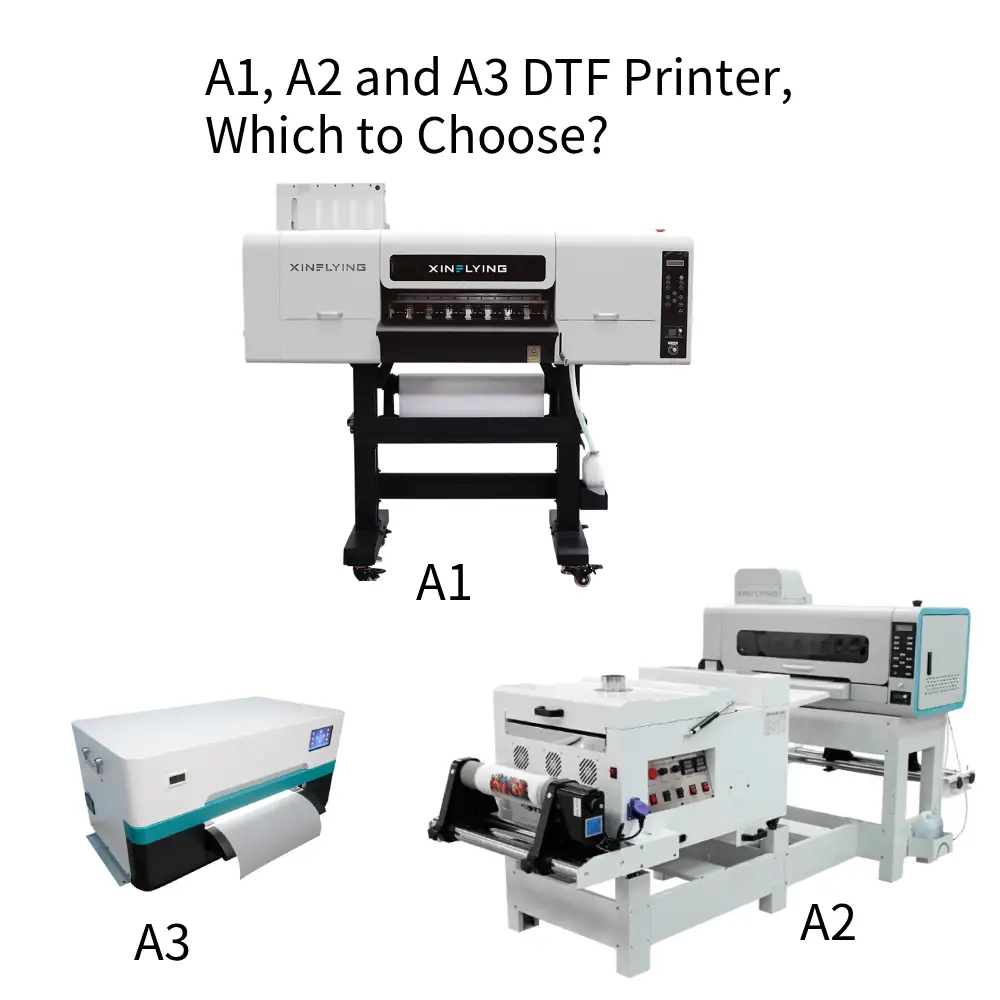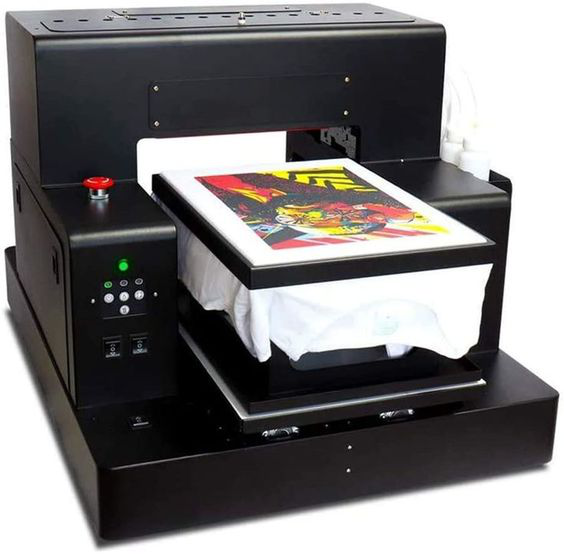
Sumber: https://www.pinterest.com.au
Percetakan Sublimation adalah teknik percetakan yang popular yang memerlukan pencetak sublimasi khusus untuk mencapai berkualiti tinggi, Cetakan tahan lama pada pelbagai substrat. Memilih pencetak sublimasi yang betul boleh menjadi tugas yang menakutkan, dengan begitu banyak pengeluar dan model yang terdapat di pasaran.
Panduan lengkap ini untuk pencetak sublimasi merangkumi semua yang perlu anda ketahui, Dari pelbagai jenis pencetak yang tersedia untuk faktor utama yang perlu dipertimbangkan semasa membuat pilihan anda. Sama ada anda seorang pemula atau berpengalaman Pengilang pencetak sublimasi, Panduan ini akan membantu anda memilih pencetak yang sesuai untuk keperluan anda dan mencapai berkualiti tinggi, Keputusan profesional.
Apa itu Pencetakan Sublimasi?

Sumber: https://www.pinterest.com.au
Pencetakan sublimasi adalah teknik percetakan digital yang melibatkan pemindahan pewarna ke substrat (seperti kain atau plastik) Menggunakan haba dan tekanan. Proses ini melibatkan Mencetak imej yang dikehendaki ke kertas pemindahan khusus menggunakan dakwat sublimasi, yang merupakan jenis dakwat khas yang boleh beralih dari pepejal ke gas tanpa melalui fasa cair.
Kertas pemindahan kemudian diletakkan ke substrat dan tertakluk kepada haba dan tekanan menggunakan akhbar haba. Ini menyebabkan dakwat sublimasi berubah menjadi gas, yang kemudian meresap gentian substrat dan menjadi tetap tertanam dalam bahan. Hasilnya adalah berkualiti tinggi, cetakan bertenaga dan tahan lama yang tahan pudar dan mengupas.
Percetakan sublimasi biasanya digunakan untuk Membuat reka bentuk tersuai pada pakaian, seperti T-shirt, topi, dan penyokong, serta barangan promosi seperti cawan, coaster, dan kes telefon. Ini adalah pilihan yang popular untuk mencetak kain poliester, tetapi juga boleh digunakan pada bahan lain seperti seramik, logam, dan kayu.
Proses Percetakan Sublimation
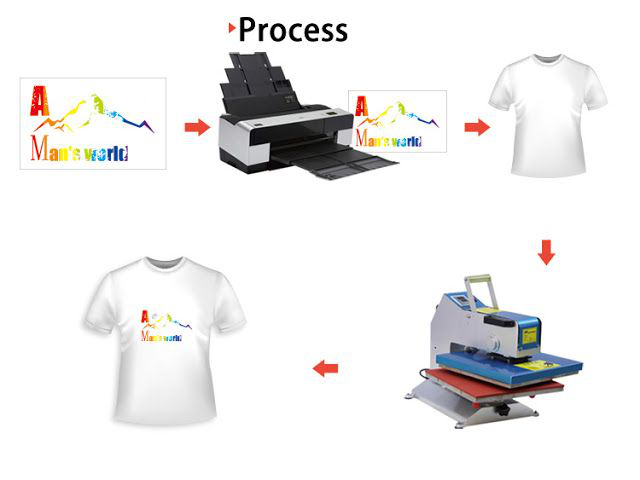
Sumber: https://www.pinterest.com.au
Proses percetakan sublimasi biasanya melibatkan langkah -langkah berikut:
1. Reka bentuk
Buat atau pilih reka bentuk yang ingin anda cetak ke substrat anda. Ini boleh dilakukan menggunakan perisian reka bentuk grafik atau dengan membeli reka bentuk pra-buatan.
2. Mencetak
Cetak reka bentuk ke kertas pemindahan sublimasi menggunakan pencetak khusus yang bersesuaian dengan dakwat sublimasi.
Menyediakan substrat: Panaskan haba anda ke suhu yang sesuai untuk substrat anda. Letakkan substrat ke akhbar haba dan pra-tekan selama beberapa saat untuk mengeluarkan sebarang kelembapan dan kedutan.
3. Meletakkan kertas pemindahan
Letakkan muka kertas pemindahan bercetak ke substrat, memastikan ia berpusat dan reka bentuknya menghadapi substrat. Selamatkan kertas pemindahan di tempat dengan pita tahan panas.
4. Memohon haba dan tekanan
Tutup tekan haba dan gunakan jumlah haba dan tekanan yang sesuai untuk masa yang disyorkan. Panas dan tekanan akan menyebabkan dakwat sublimasi berubah menjadi gas dan menyerap serat substrat, Membuat ikatan tetap.
5. Penamat
Setelah tiba masanya, Buka tekan haba dan keluarkan substrat dan kertas pemindahan. Benarkan substrat untuk menyejukkan dan keluarkan kertas pemindahan. Reka bentuk sekarang harus ditanam secara kekal ke dalam substrat.
6. Pemeriksaan berkualiti
Periksa substrat untuk sebarang kelemahan atau kecacatan, dan membuat sebarang pelarasan atau pembetulan yang diperlukan.
Substrat yang boleh digunakan dengan percetakan sublimasi

Sumber: https://inkteknigeria.com
Percetakan Sublimasi boleh digunakan pada pelbagai substrat, Tetapi ia paling sesuai untuk bahan yang diperbuat daripada poliester atau mempunyai salutan poliester. Berikut adalah beberapa substrat biasa yang boleh digunakan dengan percetakan sublimasi:
- Pakaian
Percetakan Sublimasi biasanya digunakan untuk mencetak reka bentuk pada kain berasaskan poliester, termasuk t-shirt, Jersey, topi, dan barang pakaian lain.
- Seramik
Percetakan Sublimasi boleh digunakan untuk mencetak reka bentuk pada cawan seramik, pinggan, dan jubin.
- logam
Percetakan Sublimasi boleh digunakan untuk mencetak reka bentuk pada aluminium, tembaga, dan permukaan logam lain.
- Plastik
Percetakan Sublimasi boleh digunakan untuk mencetak reka bentuk pada barangan plastik, seperti kes telefon, Keychains, dan botol air.
- kaca
Percetakan Sublimasi boleh digunakan untuk mencetak reka bentuk pada barang kaca, seperti bingkai foto dan perhiasan.
- kayu
Percetakan Sublimasi boleh digunakan untuk mencetak reka bentuk di permukaan kayu, seperti plak dan tanda -tanda.
Kertas Dakwat dan Pemindahan: Cara Memilih Yang Betul

Sumber: https://www.babbel.com
Berikut adalah beberapa petua untuk memilih kertas dakwat dan pemindahan yang betul untuk aplikasi percetakan sublimasi anda yang dimaksudkan:
Pertimbangkan substrat anda
Jenis substrat yang anda merancang untuk mencetak akan memainkan peranan besar dalam menentukan jenis dakwat dan kertas pemindahan yang harus anda gunakan. Contohnya, Sekiranya anda merancang untuk mencetak pada kain berasaskan poliester, anda memerlukan kertas dakwat dan pemindahan yang direka khusus untuk digunakan dengan poliester.
Semak keserasian pencetak
Pastikan kertas dakwat dan pemindahan yang anda pilih serasi dengan model pencetak anda. Sebilangan pencetak mungkin memerlukan jenis dakwat atau kertas pemindahan tertentu untuk menghasilkan cetakan berkualiti tinggi.
Pertimbangkan gamut warna
Gamut warna merujuk kepada pelbagai warna yang boleh dihasilkan oleh dakwat. Cari kertas dakwat dan pemindahan yang menawarkan gamut warna yang luas, kerana ini akan membolehkan anda mencapai warna yang lebih bersemangat dan tepat dalam cetakan anda.
Cari masa pengeringan yang cepat
Beberapa dakwat sublimasi mungkin memerlukan masa pengeringan yang lebih lama sebelum mereka bersedia untuk pemindahan haba. Untuk masa pengeluaran yang lebih cepat, Cari dakwat yang menawarkan masa pengeringan yang cepat.
Pilih kertas pemindahan berkualiti tinggi
Kualiti kertas pemindahan boleh memberi kesan yang besar terhadap kualiti cetakan anda. Cari kertas pemindahan yang mempunyai kadar pelepasan yang tinggi dan direka khusus untuk percetakan sublimasi.
Pertimbangkan pilihan salutan
Sebilangan kertas pemindahan dilengkapi dengan salutan yang direka untuk meningkatkan penyerapan dakwat dan kualiti pemindahan. Cari kertas pemindahan dengan salutan yang serasi dengan dakwat dan substrat anda.
Cari nilai
Pertimbangkan kos kertas dakwat dan pemindahan semasa membuat pilihan anda, tetapi juga pastikan untuk memilih bahan berkualiti tinggi yang akan menghasilkan hasil yang anda mahukan.
Kelebihan dan Kekurangan

Sumber: https://www.shutterstock.com
Kelebihan
- Cetakan berkualiti tinggi: Percetakan sublimasi menghasilkan berkualiti tinggi, bersemangat, dan cetakan tahan lama yang tahan terhadap pudar dan mengupas.
- Pelbagai substrat: Percetakan Sublimasi boleh digunakan pada pelbagai substrat, termasuk kain berasaskan poliester, seramik, logam, plastik, dan banyak lagi.
- Penyesuaian: Percetakan Sublimasi membolehkan penyesuaian reka bentuk, menjadikannya sesuai untuk hadiah yang diperibadikan, pakaian, dan barangan promosi.
- Tiada sisa: Percetakan Sublimation tidak meninggalkan sebarang sisa di substrat, menjadikannya kaedah percetakan yang lebih bersih dan mesra alam.
- Kos efektif: Percetakan Sublimasi adalah kaedah percetakan yang kos efektif, terutamanya untuk kuantiti yang lebih kecil, Oleh kerana kos per cetakan berkurangan apabila kuantiti meningkat.
Kekurangan
- Julat warna terhad: Percetakan Sublimasi mempunyai julat warna yang terhad, kerana ia hanya dapat menghasilkan warna yang berada dalam gamut warna dakwat yang dipilih.
- Pilihan substrat terhad: Percetakan sublimasi hanya sesuai untuk substrat yang diperbuat daripada poliester atau mempunyai salutan poliester, yang mengehadkan pelbagai substrat yang boleh digunakan.
- Kos peralatan: Percetakan Sublimasi memerlukan peralatan khusus, termasuk apencetak sublimasi, Tekan haba, dan kertas dakwat dan pemindahan khusus, yang boleh mahal.
- Lengkung pembelajaran: Percetakan Sublimasi memerlukan kemahiran dan pengalaman untuk mencapai hasil yang terbaik, Dan ada keluk pembelajaran yang terlibat dalam menguasai teknik.
- Tidak sesuai untuk substrat gelap: Percetakan Sublimasi tidak berfungsi dengan baik pada substrat gelap, sebagaidakwat sublimasi adalah lut dan tidak akan muncul dengan baik pada warna gelap.
Kemungkinan kreatif dengan percetakan sublimasi

Sumber: https://blog.bookbaby.com
Percetakan Sublimation menawarkan pelbagai kemungkinan kreatif, menjadikannya pilihan yang popular untuk hadiah peribadi, pakaian, dan barangan promosi. Berikut adalah beberapa kemungkinan kreatif dengan percetakan sublimasi:
- Pakaian Tersuai
Percetakan Sublimation membolehkan percetakan semua pada kain berasaskan poliester, menjadikannya sesuai untuk membuat baju kaum tersuai, Jersey, dan barang pakaian lain dengan reka bentuk penuh warna.
- Hadiah Diperibadikan
Percetakan Sublimasi boleh digunakan untuk membuat hadiah peribadi, seperti cawan, coaster, kes telefon, dan bingkai foto. Kemungkinannya tidak berkesudahan, dan anda boleh mencetak apa -apa dari foto keluarga ke petikan kegemaran.
Item promosi: Percetakan Sublimasi sangat sesuai untuk membuat barang promosi, seperti pen, Keychains, dan botol air, dengan logo atau mesej syarikat anda.
- Papan tanda
Percetakan Sublimasi boleh digunakan untuk membuat papan tanda, seperti sepanduk dan bendera, untuk acara, Pertunjukan perdagangan, dan perniagaan.
- Hiasan rumah
Percetakan Sublimasi boleh digunakan untuk membuat barang hiasan rumah tersuai, seperti membuang bantal, seni dinding, dan pelari meja.
- Peralatan sukan
Percetakan Sublimasi boleh digunakan untuk membuat peralatan sukan yang disesuaikan, seperti bola sepak, bola keranjang, dan frisbees.
- Aksesori haiwan
Percetakan Sublimasi boleh digunakan untuk membuat aksesori haiwan kesayangan yang diperibadikan, seperti tag haiwan dan bandannas.
- Item Novelty
Percetakan Sublimation boleh digunakan untuk membuat item baru yang unik, seperti teka -teki, bermain kad, dan magnet.
Kesilapan biasa untuk dielakkan

Sumber: https://www.dreamstime.com
Percetakan sublimasi pada tekstil boleh menjadi agak rumit, dan terdapat beberapa kesilapan biasa yang boleh berlaku. Berikut adalah beberapa kesilapan untuk dielakkan semasa percetakan sublimasi pada tekstil:
- Menggunakan kain yang salah
Percetakan Sublimation berfungsi dengan baik pada kain berasaskan poliester, Oleh itu, pastikan untuk memilih kain yang sekurang -kurangnya 50% poliester. Elakkan menggunakan kain yang terlalu elastik atau mempunyai kandungan kapas yang tinggi, kerana mereka mungkin tidak menghasilkan hasil yang baik.
- Tidak menyiapkan kain dengan betul
Sebelum mencetak, Pastikan untuk membuat pra-menekan kain untuk mengeluarkan sebarang kelembapan dan kedutan. Ini akan memastikan kain itu rata dan bersedia menerima dakwat.
- Tidak menggunakan tekanan yang mencukupi
Untuk memastikan pemindahan yang baik, kain mesti ditekan dengan tekanan yang cukup. Pastikan untuk menyesuaikan tekanan pada tekan haba anda mengikut tetapan yang disyorkan untuk substrat anda.
- Tidak menggunakan dakwat yang betul
Pastikan untuk memilih dakwat sublimasi yang direka khusus untuk digunakan dengan tekstil. Menggunakan dakwat yang salah dapat mengakibatkan kualiti pemindahan yang lemah dan ketepatan warna.
- Tidak menggunakan kertas pemindahan yang betul
Pilih kertas pemindahan yang direka khusus untuk digunakan dengan tekstil. Menggunakan kertas pemindahan yang salah dapat mengakibatkan kualiti pemindahan yang lemah dan ketepatan warna.
- Tidak menggunakan suhu dan masa yang tepat
Pastikan anda menggunakan tetapan suhu dan masa yang disyorkan untuk tekan haba anda. Menggunakan terlalu sedikit atau terlalu banyak masa atau haba boleh mengakibatkan kualiti pemindahan dan ketepatan warna yang lemah.
Kesimpulan

Sumber: https://www.pinterest.com.au
Kesimpulannya, Memilih pencetak sublimasi yang betul adalah penting untuk mencapai berkualiti tinggi, Cetakan tahan lama pada pelbagai substrat. Dengan mempertimbangkan faktor seperti jenis pencetak, Jenis dakwat, warna gamut, dan saiz lembaran, Anda boleh memilih pencetak sublimasi terbaik untuk keperluan anda.
Selain itu, penting untuk memilih berkualiti tinggi kertas sublimasi yang serasi dengan pencetak dan substrat anda. Bagi mereka yang mencari alternatif untuk percetakan sublimasi, pencetak DTFs dan Pencetak DTGs juga pilihan untuk dipertimbangkan. Dengan maklumat dan petua yang disediakan dalam panduan lengkap ini untuk pencetak sublimasi, Anda dengan yakin boleh memilih pencetak yang tepat untuk keperluan anda dan mencapai cetakan gred profesional yang akan menarik perhatian.



